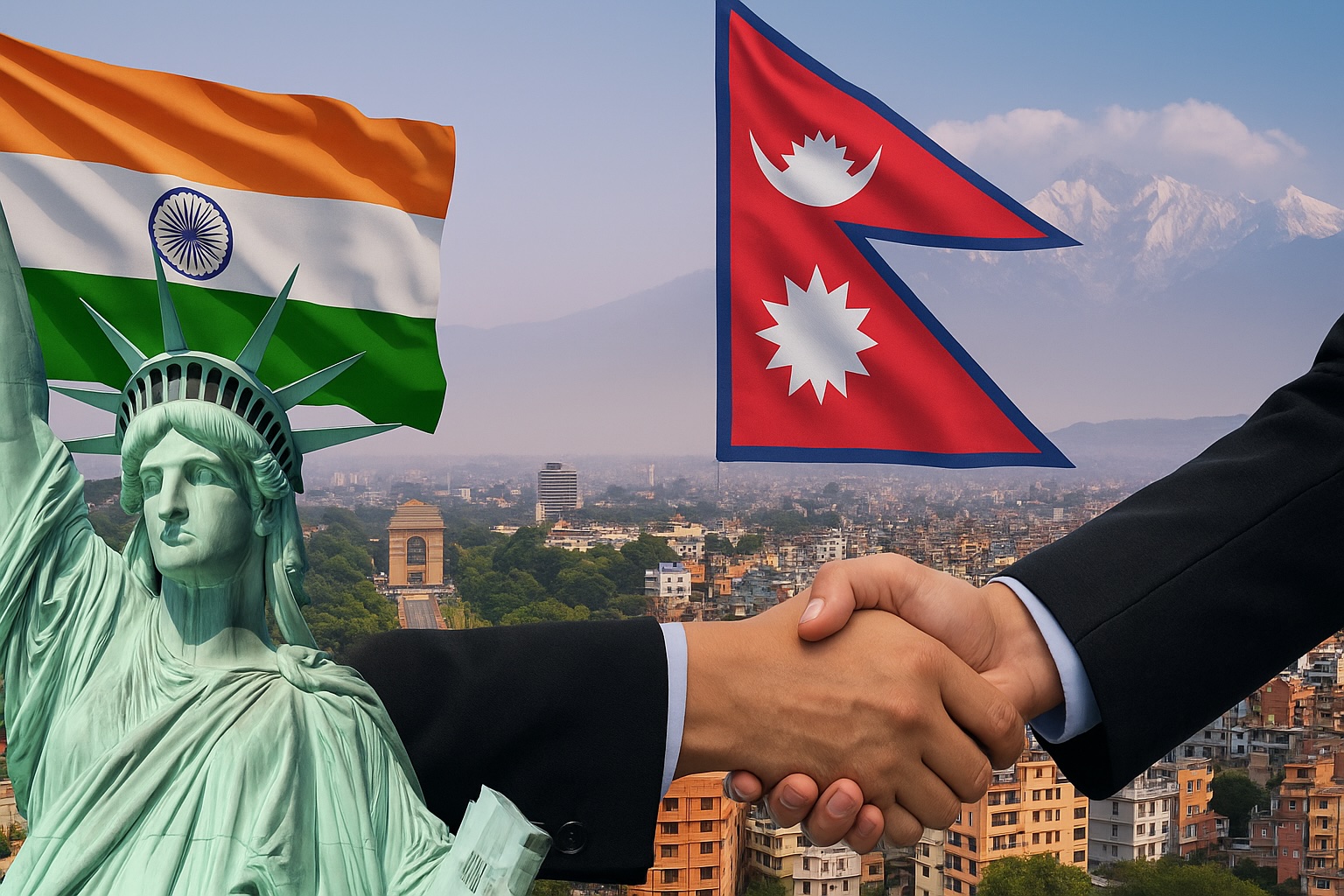Does the U.S. Truly Value Nepal? A Deeper Look into Washington’s South Asia Strategy

In the grand chessboard of global diplomacy, the United States’ engagement with South Asia paints a picture shaped more by strategic calculus than emotional allegiance. While both India and Nepal maintain historic ties with Washington, a closer examination reveals just how unevenly that attention is distributed — often dictated by economic power, regional influence, and the ability to serve U.S. interests.
Economic Disparities Define Engagement
India, with its massive consumer base, global clout, and strategic location in the Indo-Pacific, has evolved into one of the U.S.’s most vital partners. Bilateral trade between the two countries soared to approximately $129 billion in 2024, making the U.S. India’s top trading partner. American investment in India nears $60 billion, with Indian companies pumping in an additional $40 billion into the U.S. market. This growing economic interdependence has brought both nations closer — not just in boardrooms, but in boarder discussions on regional security, defense cooperation, and digital governance.
Nepal, in comparison, lags far behind in Washington’s ledger. Annual trade hovers around $300 million, with the U.S. still one of Nepal’s top six trade partners. While American assistance has played a crucial role in Nepal’s development journey — such as the $659 million USAID agreement in 2022 — the priorities have been shifting. This shift became stark in early 2025, when the U.S. froze a $500 million MCC grant meant to boost Nepal’s energy infrastructure. The move sent ripples through Nepal’s political and development circles, raising concerns about the conditional nature of American support.
Strategic Proximity vs. Symbolic Partnership
For Washington, India represents not only a trade partner but also a strategic hedge against China. This has led to continued engagement even during periods of friction — be it on trade tariffs or human rights. India’s growing defense cooperation with the U.S., its role in the Quad alliance, and its assertive stance in the Indo-Pacific have made it a country Washington cannot afford to alienate.
Nepal, on the other hand, does not feature prominently in American strategic playbooks. Nestled between China and India, Nepal’s geographic significance is undeniable. Yet, its foreign policy nonalignment and modest global footprint often mean that U.S. engagement is reactive, not proactive — largely limited to disaster relief, occasional high-level visits, and development aid.
Geopolitics: Who Gets the Call When It Counts?
A recent flare-up in Kashmir between India and Pakistan again demonstrated the disparity. As both nations traded missiles and rhetoric, the U.S. intervened diplomatically to broker a ceasefire, preventing potential escalation between two nuclear powers. President Donald Trump even inserted himself directly, issuing statements, urging restraint, and proposing a role in mediating the long-running conflict.
Such swift engagement, however, is often reserved for crises that threaten regional stability or risk entangling broader U.S. interests. In contrast, smaller nations like Nepal seldom see the same urgency unless instability could spill across borders or open doors for Chinese influence.
Nepal’s Quiet Wait for Recognition
Despite its democratic credentials, history of peacekeeping, and growing youth activism on climate and development, Nepal often waits in vain for deeper recognition from the U.S. Aside from aid or MCC-related discourse, Nepal’s narrative in Washington is often eclipsed by India, Pakistan, or Afghanistan.
Yet, Nepal has long played a quiet but important role — offering UN peacekeepers, hosting regional dialogues, and walking a tightrope of neutrality amid geopolitical competition. The question remains: what more must Nepal do to be seen, not just supported, by America?
Conclusion: Who Matters and Why
The U.S. foreign policy approach in South Asia underscores a harsh but real truth: value is often assigned based on utility. India’s scale and strength make it a permanent fixture in American calculations, while Nepal, despite its goodwill and geostrategic location, remains in the shadows.
This disparity raises a moral and diplomatic question: Does the U.S. value countries for who they are — or for what they can offer? For Nepal, that answer may define the next chapter in its delicate dance between powers.
In a region where allegiances are shifting and stakes are rising, Nepal’s place in the American worldview may yet change — but only if Washington begins to look beyond power, and towards potential.



